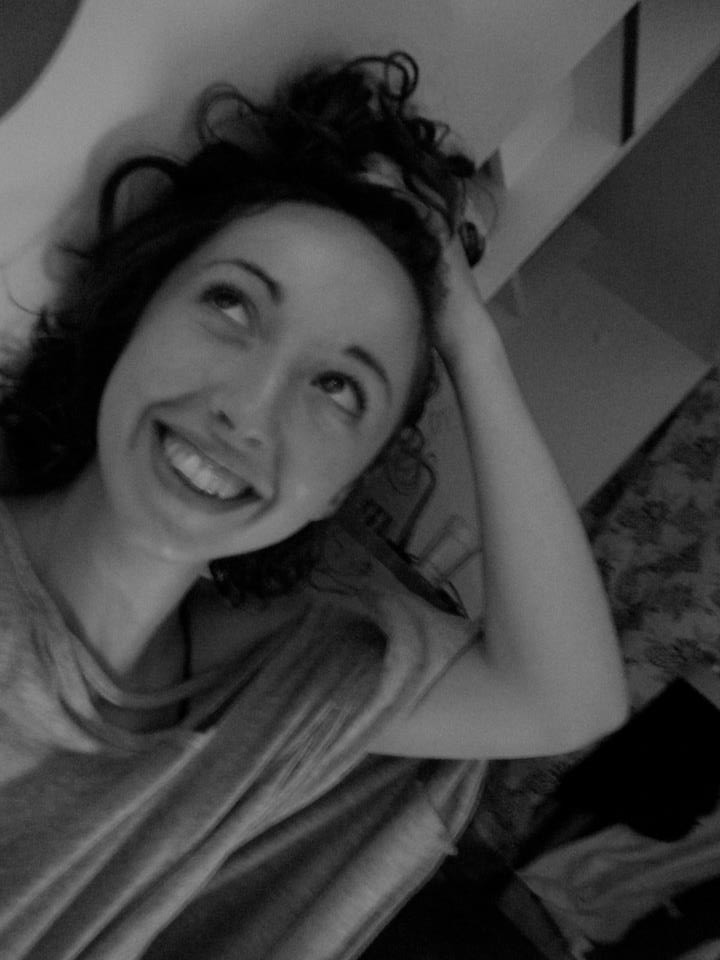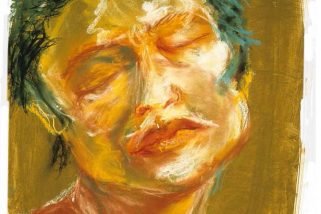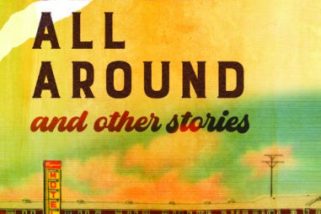
“Keep Calling My Name: Frogs, Circles and Climate Change” by Jocelyn Edelstein
On a sticky evening in Rio de Janeiro, Brazil, I sat behind a tripod, peering at the screen of a small HD camcorder as my friend and his mom let me interview them about life, dance and surviving in Brazil on a very limited income.
My friend, who I’d known since he was a skinny 18-year-old boy wearing oversized newsy caps, had transformed into a muscled 25-year-old-man with short dreads and silver spectacles. He’d always had a way of bridging the space between high concept and simple truth, with a heart-centered perspective. While speaking about the importance of unity, he paused mid-sentence to seek out a more tactile representation for his thoughts. He glanced at his mom and asked her to give him her hand. Lacing his fingers in hers he said, “When a circle is formed it’s the symbol of union. This union allows us to circulate energy. This energy is what we call love.”
Expanding and shrinking the circle within their interlocked fingers, he demonstrated how to stay linked while responding to movement with pliable ease.
“When there’s flexibility in love, there is more power,” he smiled.
In essence, the circle has more strength when it can bend and undulate with the velocity of movement or change. This isn’t just high concept – this is proven in physics and executed in architecture. It’s a truth that scientists use as well as dancers. It’s somewhere in our human psyche – the knowledge that the circle has to form and then the circle has to flex.
It’s been two years since I was in Brazil and when I’m not a filmmaker in Rio de Janeiro, I’m an elementary school dance teacher in Portland, Oregon. In both of these seemingly discordant worlds, I’m yearning to discover an equally discordant piece of information. I’m yearning to discover what aspects of our humanity we will most need to reconcile a rapidly warming world. I wonder, with shallow breath during sleepless dawns, how we will collectively handle the global climate crisis as it worsens. I wonder, beyond the tangible, necessary, overdue and self-sacrificing measures we must all be willing to take, what deep human well we will draw upon to get us the rest of the way there. How will we stand as a united front, so we can move the planet and ourselves from one side of this crisis to the other?
In the gym, on an unusually sunny January afternoon in Portland, twenty-eight first graders look at me wide eyed as I hold a stuffed frog in my arms. I tell them the story of how this small frog traveled through the Land Of Froo Froo, across the snowy mountains and over the lava bridge, until she reached the castle of a very grumpy king. They lean forward in their cross-legged position and practically tip onto their tummies, as I explain how the frog gathered all of her courage to perform a dance for the king, hoping that in a fit of inspiration, he’d overturn the unjust law that prohibited Froo Froo-ians the right to dance. (If you didn’t know this part of make-believe history, there was a terrible decree in 17fluffywiggle20 that no one in the land of Froo Froo could move in any way that resembled dancing and Froo Froo-ians have been living stiffly under the law ever since).
At the school where my part time dance teacher persona operates, children learn about different life guidelines and these guidelines are incorporated, when possible, into daily curriculum. Things like cooperation, resourcefulness, trustworthiness and courage. After my story about the brave little frog and her journey to dance for the king (including her subsequent success overturning the anti-dance law – i.e. Frog V. King) the kids line up against the side wall and prepare to work on their core strength, their spatial acuity and their buoyancy. Or put more simply, they prepare to jump like small frogs along a green painted line that takes them from one side of the gym to the other.
I instruct them to move one at a time, to keep one frog paw on each side of the line as they jump and to wait on the other side until every frog makes it across.
I know they’re excited about jumping, I know they are ready to impersonate the brave little frog from the tale I spun and I know they’ll giggle and squeal as they revel in the satisfaction of pushing against gravity. But I don’t anticipate what they’ll do when they reach the other side. I don’t imagine suddenly bearing witness to a profound display of teamwork, as twenty-eight six-year-olds show me the counterpart to courage.
The first child to froggy jump across the green line, (which is clearly imagined to be the treacherous lava bridge our protagonist traveled on her way to see the king), is Jack. When Jack gets to the other side, he immediately begins calling out the name of the next little girl who’s waiting to jump.
“Annie!” he cries, “Annie, keep going, I’m here! Annie! You can do it!”
He yells out to her like this, the entire time she jumps the line, until she makes it to the other side. When Annie gets to Jack, she begins screaming the name of their next classmate alongside him, clapping her hands wildly. And so on and so forth – every child that makes it across joins the group and begins to call the next brave jumper to the other side of the gym.
The expression on their face as they journey along the line is both courageous and relieved. Relieved to be seen and valued. Relieved by the en-courage-ment of their community. And so the courage builds. The consuming cacophony that accompanies the final member of the class is outright jubilant. It is dramatically heightened because at this point the stakes are clear. NO ONE will be left behind. And finding themselves so close to getting the whole group across the divide, this class of twenty-eight first graders, will not settle for twenty-seven.
I find myself wondering why, as adults, we so often lose our deep inner knowing for how communities function successfully and for what individuals need to not only survive, but to thrive. Why do we lose our basic ability to encourage each other with wild, sincere abandon, in the simplest and greatest of tasks?
These 6-year-olds tapped right into an important universal code. We feel braver when our community bears wide-eyed-witness to our challenges, loving us amidst our fear and our confidence. We feel braver when someone waits on the other side, reminding us over and over, “I’m here!” We feel braver when someone promises to call out our name until we make it all the way across.
As we move forward and the crisis of climate change begins to make a tangible and disturbing impact on the places still largely insulated from its effects, we will need to rapidly join forces and figure out how to save whatever we can or how to survive in the midst of what we cannot save. Blame and villainization will have no place because we will have no time. We will have no time for rigidity. We will need to look for answers everywhere.
We will need to form a circle and figure out where the flex of that circle originates. We will need to bend and undulate with the forces of change without breaking the circle we’ve formed. We will need to call each other’s names over and over and over.
In Brazil, on that night two years ago, my camera battery blinked an alarming five minutes left of charge, but I knew not to rush my friend and his mom. I knew not to break the flow of the interview.
Hands still intertwined, my friend looked at his mother and searched for words to wrap up his metaphor.
“If we leave the circle, if we abandon each other, we…”
She cut in without hesitation, looking directly at my camera and said, “We lose everything.”
____________________
Share your response to this work, in any form, here

Jocelyn Edelstein, Winner of 2016 Orlando Creative Nonfiction Prize
Jocelyn Edelstein’s work has appeared in three Best Women’s Travel Writing anthologies, The Other Otter, 3Elements Review, Conscious Dancer Magazine and Commonline Journal. When she’s not teaching dance, she’s writing about the great outdoors or making films about movement and community. Her feature length documentary, Believe The Beat, is currently in post production.






